Notice the white draping, overlay, hair, headpieces, & footwear were like the early Greeks & Romans.
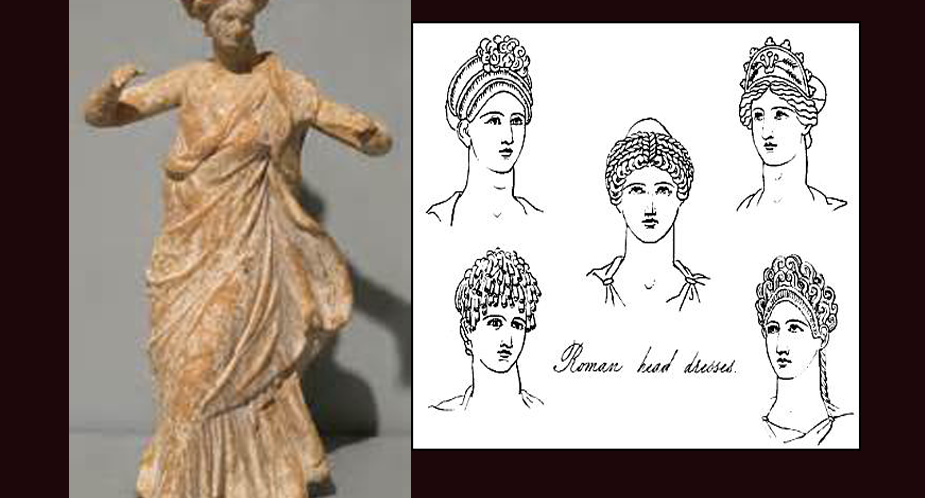

Notice the white draping, overlay, hair, headpieces, & footwear were like the early Greeks & Romans.
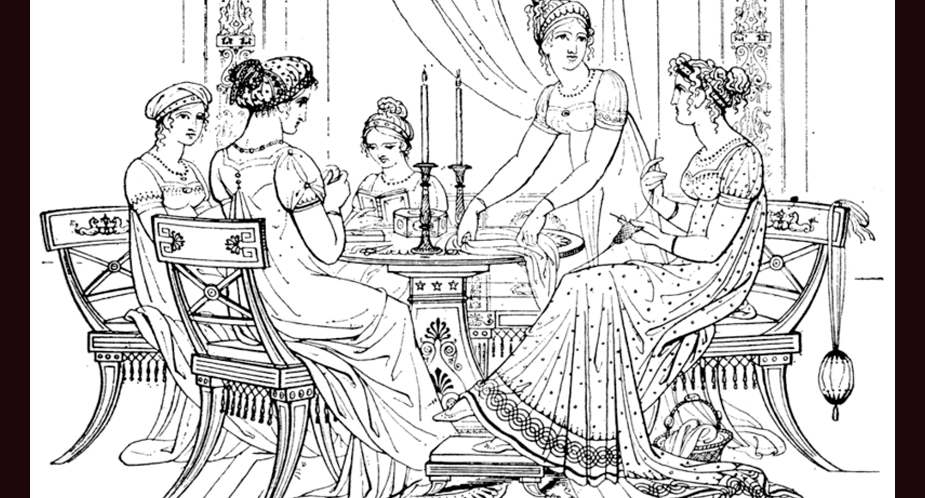
The “First Era” of Regency, technically 1794-1804 (although there were “crossovers” from earlier & later styles), emphasized ancient Greek & Roman fashion. This incorporated the “Little White Dress” of the draped statues, “Chemise a la Reine” that Marie Antionette had introduced when she escaped to her “Petit Hameau” to wear …
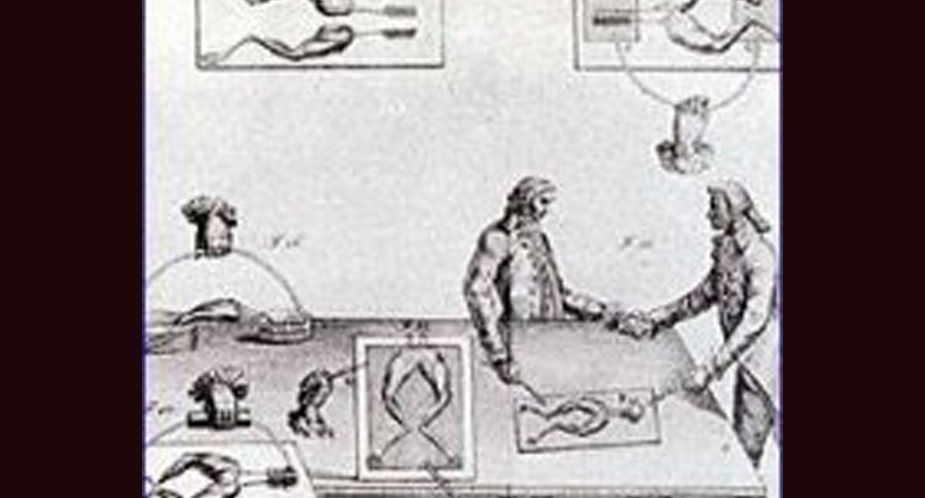
Click on the photo, and it will take you to the website, where you can see it in full size PLUS additional pictures we add. (feature photo: Technology of the early 1800’s: frogs’ legs; below: Le Corbusier’s steam engines)
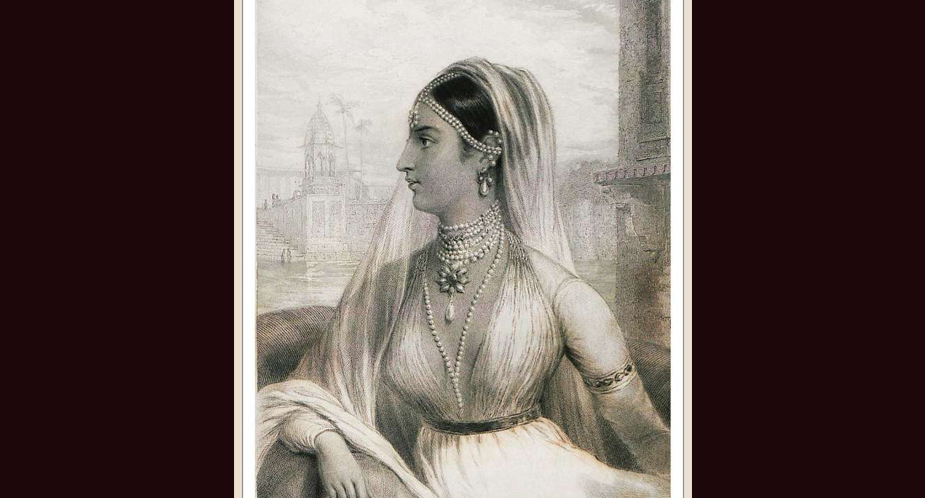
…Red Pantalettes of “Mother Featherlegs”, “Little White Dress” defining Regency fashion, & NOW… In 1783, a French woman from the West Indies introduced a BLUE RINSE to wash & sanitize white clothing. The thin, white cottons coming from India gained even more popularity, because it became easy to keep them …

PANTALETTES CARRY ON… “Mother Featherleg’s” Pantalettes are in the news again, because they are going on tour, but don’t worry, there will be a “Pantalette Posse” to make sure no shady characters steal them again. Throughout each summer, places including Cody, Wyoming have performances depicting “Mother” & similar characters. The …
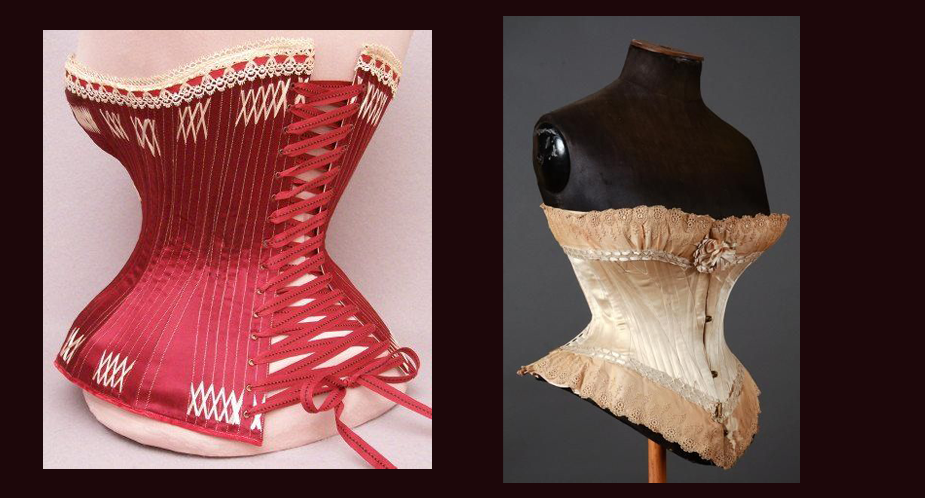
THE HAPPY ENDING… “Mother Featherleg’s” red pantalettes, stolen in the 1964 celebration, were discovered in a Deadwood saloon in 1990. A “posse” of local residents raided the saloon, got them back, & escorted the underwear to the Stagecoach Museum in Lusk, Wyoming, which remains their permanent home. BUT THERE’S MORE.. …
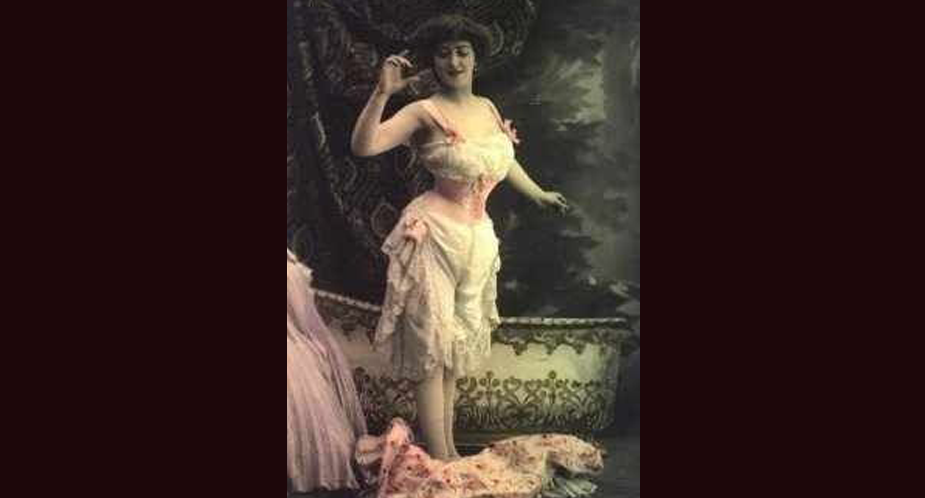
STORY CONTINUES… Jump ahead to 1964 near Lusk, WY, when a pink granite marker was erected to mark “Mother Featherleg’s”, the famous bordello “Madame” of the 1876 wild west, as part of an historical re-enactment of the Cheyenne-Deadwood Stage Run. The famous Red Pantalettes were proudly put on display, waving …
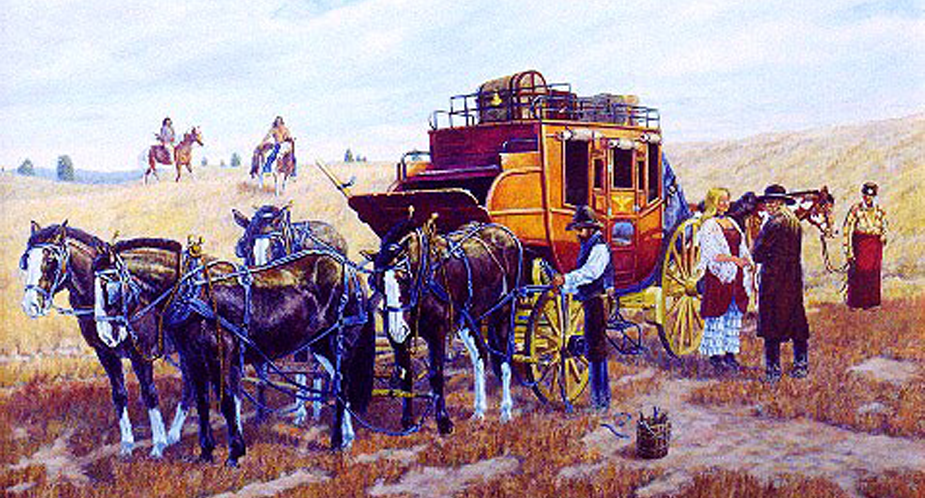
Yes, this is a current news item for March, 2017! “Mother Featherleg’s” 1876 pantalettes, previously “on tour”, have returned to the museum in Deadwood, WY. THE STORY… Back in 1876, near Muskrat Canyon, Charlotte Shephard established a saloon & bordello. Though it was more of a dugout than a house, …
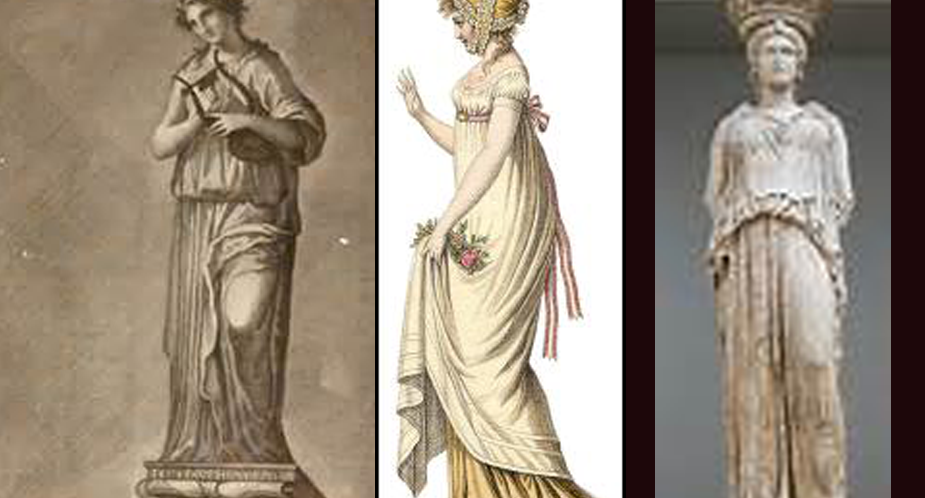
The earliest Regency fashion era (1800-1803) was based on Greece. The very lightweight, white, muslin dress was almost an exact replica of statuary & iconic images of the ancient Greeks & Romans. (photo: (left) ancient Greek statue; (center) 1799 Greek influence Regency fashion plate; (right) Greek Caryatid from ancient architecture)
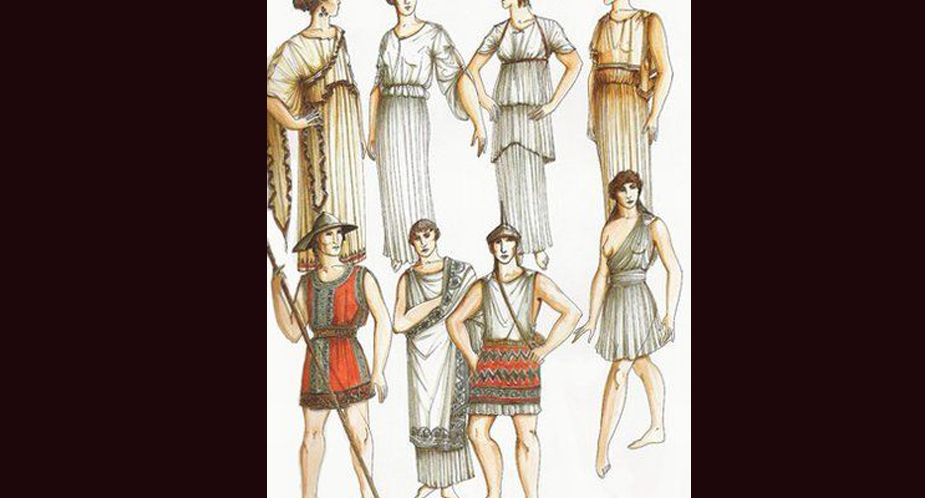
The loose, draped style depicted in ancient Roman and Greek artifacts, sculpture, & architecture was perfect to adapt to the “Gaulle” (loosely draped chemise-like dress) Marie Antoinette had introduced about 10 years earlier. (photo & sketch: ancient Greek styles, one of many caryatids on a Greek building)